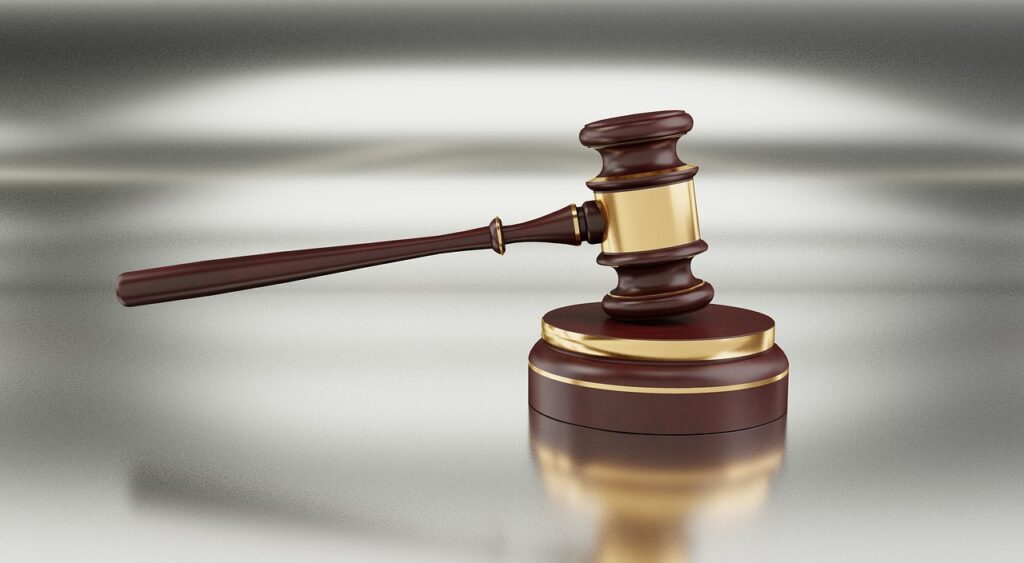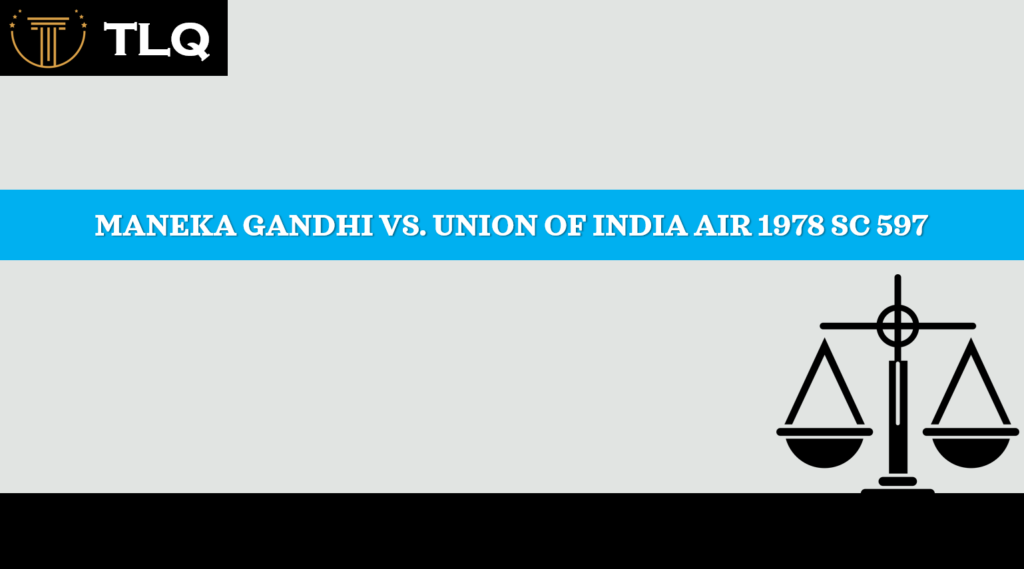Published on: 19th November 2025
Authored by: Divya Roy
Bharati Vidyapeeth
Court: Supreme Court of India
Bench: R.F. Nariman, J. Chelameswar
Date of Judgement: March 24, 2015
Relevant Provisions/Statutes: Article 19(1)(a), 19(2), of the Constitution, S.66-A, S.69-A of the IT Act, 2000.
Brief Facts
In 2012, Shaheen Dada and Rinu Shrinivasan were arrested in Palghar, Maharashtra. While Shaheen posted a comment on Facebook, expressing distress over the shutdown of Mumbai in view of the funeral of Bala Saheb Thackeray, former Shiv Sena leader, the other girl, Rinu, liked the comment. A local Shiv Sena leader lodged a complaint. Under Section 66A of the IT Act, 2000, the ‘offensive’ comment led to the arrest.
Issues
- Whether S.66A and S.69A of the IT Act, 2000, are constitutional.
- Whether S.66-A violated the petitioner’s right to free speech and expression under Article 19(1)(a) of the Constitution.
- Whether section 66A of the IT Act creates a chilling effect on free speech and expression?
- Whether S.66A is in accordance with the reasonable restrictions under Article 19(2) of the Constitution.
Arguments
Arguments on behalf of Petitioners
- The learned counsel for the petitioners argued that S.66A of the IT Act, 2000, infringes the right to free speech and expression under Article 19(1)(a) of the Constitution. The section is outside the purview of Article 19(2) and cannot be protected by any of the 8 subjects under Article 19(2).
- Further, he emphasised S.66A being vague and undefined. As a result of this, innocents are roped in as well as the accused, since there is no clear demarcation.
- Due to such vagueness and ambiguity, it leaves gaps for the authorities to act arbitrarily and whimsically and book persons under the section.
- The enforcement of S.66A is an insidious form of censorship and thus against the core value of Article 19(1)(a).
- Additionally, all this leads to a chilling effect on the right of free speech and expression of the citizens.
- Further, he argued that neither the accused nor the authority could exactly determine whether an offence was committed or not.
- He also made an objection to Rules 3(2) and 3(4) of the IT Rules, 2009, on two grounds. First, Rule 3(4) directed intermediaries to take action on their discretion by removing certain kinds of content from their platform. However, ‘intermediaries’ were neutral platforms that allowed interaction between people over the internet. They do not need to act like censors or judges. Second, these rules offered no safeguards to protect people’s rights, unlike the rules made in the IT Rules, 2009, made under S.69-A.
- He also pointed out that the rights under Articles 14 and 21 are also breached. Since there is no intelligible differentia between individuals using the Internet as a communication medium and those who use other mediums. This being said, the ones using the print media or any other medium of communication are out of the scope of S.66A and S.69A of the IT Act.
- With this, the right to personal liberty under Article 21 is also breached.
Arguments by Respondent
- The learned Additional Solicitor General defended the constitutionality of S.66A. He argued that the legislature is in the best position to understand and appreciate the needs of the people.
- Accordingly, the courts will interfere with the legislative process only when the statute is in clear violation of the rights of the citizens.
- Mere abuse of a provision cannot be a sole ground to declare the provision invalid.
- Furthermore, he stated that loose language may have been used in S.66-A in dealing with the methods used to cause disturbance in other people’s rights using the internet as a tool.
- Then he stated that vagueness is not the ground to declare a statute unconstitutional if otherwise, the statute is legislatively competent and non-arbitrary.
- The learned counsel argued for a relaxed standard of reasonableness of restriction for other mediums, stating that while the reach of the print media was limited to a state or, at most, one country, the reach of the internet transcends boundaries.
- He further argued that an illiterate person cannot perceive free speech and expression used in print media, but the Internet is accessible to all, whether literate or illiterate.
- There is no pre-censorship on content over the internet, unlike television shows and movies, and each individual is a publisher, producer, and director of the content without any regulation over the content.
- He pointed out the doctrine of severability enshrined in Article 13 of the constitution, stating that there is no requirement of deleting an entire law or provision but just severing the portion of the provision that is not in terms of the constitution.
Ratio Decidendi
Right to free speech and expression
Three concepts are essential in order to understand this article. First is discussion, second is advocacy, and third is incitement. Mere discussion or even advocacy of a particular cause is the core of Article 19(1)(a). Such discussion or advocacy is met with Article 19(2) only when it reaches incitement. At this stage, a law may be made to curtail the speech or expression that leads to or tends to cause public disorder or becomes a threat to the sovereignty and integrity or the relations with foreign states, or any of the 8 subjects mentioned in Article 19(2).
Vagueness and Overbroadness
A penal law is void for vagueness if it fails to define a criminal offence with definiteness. It should be clear to the ordinary people what conduct is prohibited and what conduct is permitted, as well as to those administering the law, as to what offence has been committed so that there exists no place for arbitrary actions and discriminatory enforcement. Further, the notions of “grossly offensive” and “menacing” are so vague that there is no manageable standard by which it can be determined whether one can be said to have committed an offence or not. Furthermore, every expression used in the section is ‘nebulous.’ What may be ‘offensive’ to one may not be offensive to another. There is no demarcating line.
Chilling Effect
The section had a chilling effect. It is so broad that it includes not only harmful speech but also innocent and protected speech. This may discourage people from speaking up freely due to fear, since they may not even know what might cause them trouble. This hampers their fundamental right to free speech and expression, discouraging them from getting involved in discussions, exchanging opinions or dissents, or engaging in discourse.
Final Decision
The Supreme Court struck down S.66A in its entirety in view of the section being violative of Article 19(1)(a) of the Constitution. The two-judge bench pointed out that the section could not be protected under Reasonable Restrictions as enshrined in Article 19(2). Further, it was held that S.69A of the IT Act, 2000, was constitutionally valid.
Post-Judgement and Current Position
S.66A of the IT Act was struck down in 2015. This remains valid today. However, post- judgement implementation was met with challenges. The police authorities continued to file FIRs and made arrests all over the country. The NCRB data showed that over 1300 cases were registered post the judgement in 2015. Given this, in 2019, the apex court passed orders to the Union and state governments to spread awareness to the police regarding the judgement.
Impact
The Shreya Singhal case was a landmark judgement. It was the first major Indian Judgement protecting the rights to free speech and expression on the internet. By striking down S.66A, it not only raised concerns over vague laws and a chilling effect but also reconstructed standards for authorities by redefining limits of the powers of the state under Reasonable Restrictions and thus, discouraged arbitrary and discriminatory actions. By doing this, it set a clear constitutional benchmark for evaluating future speech-regulating laws. Moving further, it protected online platforms from becoming censors and safeguarded user content from arbitrary takedown by clarifying the liability of the intermediaries. With this, it upheld procedural safeguards by declaring S.69A of the IT Act constitutionally valid. Thus, emphasis is placed on fair procedures for speech-restricting laws.
Conclusion
This brings us to the conclusion that the landmark judgement restored the rights to free speech and expression of people over the internet. This has ensured that the fundamental right needs to be exercised on virtual platforms as well, thereby broadening the scope of Article 19(1)(a). The unconstitutional nature of Section 66A could not remain concealed under the guise of reasonable restrictions, as it was vague and overly broad. This vagueness led to arbitrary and discriminatory actions by state authorities and thus had the potential to create a chilling effect on the citizens. The deletion of the section has protected the rights of citizens, upholding the ideals laid down in the constitution.
References
- Shreya Singhal v Union of India, Writ Petition (Criminal) No 167 of 2012 (Supreme Court of India, Nariman and Chelameswar JJ, 24 March 2015) AIR 2015 SC 1523, (2015) 5 SCC 1 https://indiankanoon.org/doc/110813550/ accessed 27 June 2025.
- Shreya Singhal v Union of India (Writ Petition (Criminal) No 167 of 2012 and others), MANU/SC/0329/2015 (SC, 24 March 2015) AIR 2015 SC 1523.
- Ayushi Saraogi, Implementing Shreya Singhal #1: Bench Contemplates ‘Remedial Measures’ to Stop Use of S 66A (Supreme Court Observer, 6 September 2022) https://www.scobserver.in/reports/implementing-shreya-singhal-1-bench-contemplates-remedial-measures-to-stop-use-of-s-66a/ accessed 29 June 2025.




